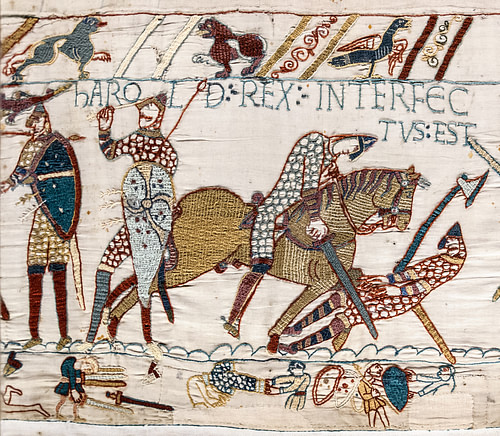
Anglo-Saxon warfare, spanning from the 5th to the 11th centuries, was a dynamic blend of evolving strategies, distinctive weaponry, and societal structures that shaped early medieval England. Understanding this period offers a window into the martial culture that influenced the formation of the English nation.
The Evolution of Anglo-Saxon Military Strategies
Initially, Anglo-Saxon warfare was characterized by small-scale raids and skirmishes among tribal groups. As threats from Viking invasions intensified, especially during the 9th century, there was a significant shift towards organized defensive measures. King Alfred the Great (r. 871–899) was instrumental in this transformation, implementing reforms that included the construction of fortified towns known as burhs and the establishment of a more structured military system.

The Role of the Fyrd in Military Organization
Central to Anglo-Saxon military organization was the ‘fyrd,’ a local militia composed of free men obligated to defend their shire. Service in the fyrd was a civic duty, with penalties imposed on those who failed to fulfill their obligations. This system allowed for rapid mobilization in response to local threats and was a cornerstone of the kingdom’s defense strategy.
Weaponry and Armor: Tools of War
Anglo-Saxon warriors were typically equipped with a range of weapons, each serving a specific purpose on the battlefield:
- Spears: The most common weapon, used for thrusting and throwing.
- Swords: Symbols of status, often elaborately decorated and passed down through generations.
- Seaxes: Single-edged knives used for close combat.
- Bows and Arrows: Employed primarily for hunting but also in warfare.
Armor typically included conical helmets and chainmail shirts for those of higher status, while the average warrior might only have a shield for protection.

Fortifications and Defensive Structures
In response to increasing external threats, particularly from Viking raids, the Anglo-Saxons developed a network of fortified sites. These burhs served as refuges for local populations and as strategic points to deter and defend against invaders. The Burghal Hidage, a document from King Alfred’s reign, lists these fortifications and their garrison requirements, highlighting the kingdom’s emphasis on organized defense.
Naval Warfare and Coastal Defenses
Recognizing the maritime nature of Viking threats, the Anglo-Saxons invested in developing a naval force. King Alfred is credited with constructing a fleet of ships to patrol the coastlines, aiming to intercept raiders before they could land. This early English navy played a crucial role in protecting the realm from seaborne invasions.
The Social Impact of Warfare

Warfare had profound effects on Anglo-Saxon society. Military service was tied to land ownership, with nobles and free men alike expected to contribute to the kingdom’s defense. This obligation reinforced social hierarchies and the bond between lords and their retainers. Additionally, the spoils of war and the distribution of conquered lands played significant roles in the economy and social mobility.
Notable Battles and Conflicts
Several key battles during this period had lasting impacts on the course of English history:
- Battle of Edington (878): King Alfred’s decisive victory against the Viking Great Heathen Army, leading to the Treaty of Wedmore.
- Battle of Maldon (991): A tragic defeat for the Anglo-Saxons against Viking invaders, immortalized in an Old English poem.
- Battle of Hastings (1066): The Norman conquest of England, marking the end of the Anglo-Saxon era.
Training and Warrior Culture
Training for warfare began in youth, with emphasis on physical fitness, weapon skills, and tactics. The warrior ethos was deeply ingrained in Anglo-Saxon culture, celebrating values like bravery, loyalty, and honor. Epic poems and sagas from the period reflect the societal admiration for martial prowess and heroic deeds.
Conclusion
Anglo-Saxon warfare was a complex interplay of evolving military strategies, societal obligations, and cultural values. From the early tribal conflicts to the organized defenses against Viking invasions, the period laid the foundations for the development of medieval English military systems. Understanding this era provides valuable insights into the resilience and adaptability of early English society in the face of continuous challenges.





